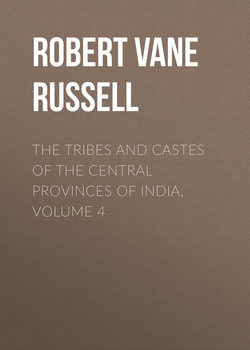Читать книгу The Tribes and Castes of the Central Provinces of India, Volume 4 - Robert Vane Russell - Страница 112
Part II
Articles on Castes and Tribes
Kumhār—Yemkala
Vol. IV
Mahār
4. Sub-castes
ОглавлениеThe caste have a number of subdivisions, generally of a local or territorial type, as Daharia, the residents of Dāhar or the Jubbulpore country, Baonia (52) of Berār, Nemādya or from Nimar, Khāndeshi from Khāndesh, and so on; the Katia group are probably derived from that caste, Katīa meaning a spinner; the Bārkias are another group whose name is supposed to mean spinners of fine thread; while the Lonārias are salt-makers. The highest division are the Somvansis or children of the moon; these claim to have taken part with the Pāndavas against the Kauravas in the war of the Mahābhārata, and subsequently to have settled in Mahārāshtra.117 But the Somvansi Mahārs consent to groom horses, which the Baone and Kosaria subcastes will not do. Baone and Somvansi Mahārs will take food together, but will not intermarry. The Ladwān subcaste are supposed to be the offspring of kept women of the Somvansi Mahārs; and in Wardha the Dhārmik group are also the descendants of illicit unions and their name is satirical, meaning ‘virtuous.’ As has been seen, the caste have a subdivision named Katia, which is the name of a separate Hindustāni caste; and other subcastes have names belonging to northern India, as the Mahobia, from Mahoba in the United Provinces, the Kosaria or those from Chhattīsgarh, and the Kanaujia from Kanauj. This may perhaps be taken to indicate that bodies of the Kori and Katia weaving castes of northern India have been amalgamated with the Mahārs in Districts where they have come together along the Satpūra Hills and Nerbudda Valley.
117
Kitts’ Berār Census Report p. 144.
